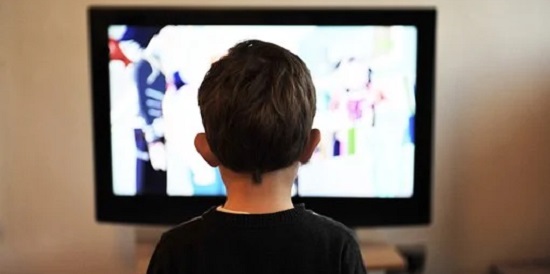Lockdowns meant long hours of screen time and less activity for families
Media release
Screen time behaviour among Australian families changed dramatically during last year's COVID lockdown with children spending almost 27 more hours each week on their screens, a new study has found.
In research which tracked screen time behaviour before and after the national lockdowns in the first half of 2020, children were found to have spent more than a day of extra time each week on smartphones, digital tablets, computers and television and the greatest changes were among children aged between five and 12 years old.
Findings from the Our Life at Home study by researchers at Deakin University's Institute for Physical Activity and Nutrition (IPAN) also revealed that parents spent an extra 14 and a half hours on their screens each week, compared to pre-lockdown.
IPAN's Dr Lauren Arundell said the increase in screen use, especially among young children was particularly worrying as it could lead to long term screen use habits that could negatively impact children’s health and wellbeing.
"Screen time has been associated with lower social development and social connections among children, so it is important that these longer periods of screen time do not become normalised behaviour," Dr Arundell said.
Dr Arundell acknowledged both parents and children needed to spend more time on their screens during lockdown because of remote school and working from home requirements, social connections, and to a lesser extent, leisure.
"Primary school aged children may not have used screens for school and social connections as much previously, but if these new habits become established, it can be hard to rewind that behaviour."
Dr Arundell said parents and families needed strategies to help reduce screen time as activities return to normal now more recent restrictions are easing.
"Organising face-to-face activities with families, schools and communities will help reduce the reliance on connecting via screens," Dr Arundell said.
"Schools should also be supported to promote non-screen tasks for homework to reduce the reliance on the use of screens at home.
"Historically strategies have focused on reducing time children spend watching television and playing video games, but this is now outdated, and parents need help to manage their children's use of digital tablets and smart phones for social activity," Dr Arundell said.
Our Life at Home is a two-year study looking at changes in behaviours and health among Australians due to COVID-19 restrictions and has collected data from almost 2800 Australians aged between five and 75, who reported changes in physical activity, screen time and health and wellbeing in February 2020 before lockdown and during lockdown in April and May 2020.
Other trends to emerge during last year's lockdown were the dramatic reduction in physical activity among children, with the biggest falls among adolescent boys.
Dr Arundell said children were 73 per cent less likely to meet moderate-to-vigorous intensity physical activity (MVPA) guidelines during the first stage of the lockdown compared to pre-pandemic.
"But adolescent males were 88 per cent less likely to meet combined moderate-to-vigorous intensity (MVPA) and muscle strengthening physical activity guidelines," Dr Arundell said.
"Adults on the other hand were doing more exercise and were 26 per cent more likely to meet the MVPA guidelines."
Dr Arundell said all age groups reported walking more and rates of home-based exercising, such as muscle strengthening and yoga, Pilates or stretching, also increased.
"This probably explains why we saw adolescent girls more likely to meet MVPA recommendations as these home-based activities, such as yoga and stretching may be more appealing to girls," Dr Arundell said.
"The COVID-19 lockdowns changed the way Australians value and prioritise physical activity and some people and age groups adapted but others did not.
"We saw a lot less informal sport practice and play and outdoor recreational activities over this study period.
"Given how important physical activity is for our physical development, mental health and academic performance, we now need to ensure physical activity is promoted in schools and communities to get Australian children and teenagers, particularly boys, active and moving again," Dr Arundell said.
The findings into physical activity levels during lockdown have been published in the Journal of Science and Medicine in Sport while the screen time findings have been published in the International Journal of Environmental Research and Public Health Special Issue, The Impact of the COVID-19 Pandemic on Physical Activity and Sedentary Behaviours.

